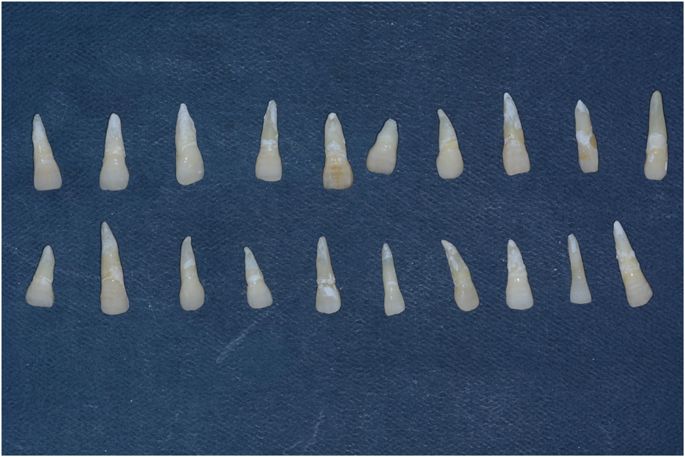BDJ Open Pub Date : 2017-01-06 , DOI: 10.1038/bdjopen.2016.10 Shuang Jia 1 , Dong Chen 2 , Defang Wang 3 , Xiangjun Bao 4 , Xiaomei Tian 5

|
Objectives:
The objectives were to evaluate the degree of dye penetration of three different dental materials as esthetic veneer restorations on anterior teeth using stereomicroscope, and to provide reference for clinical choice.
Materials and Methods:
Sixty freshly extracted human maxillary central incisors were selected and randomly divided into three main groups of 20 each. Respectively, the teeth were prepared for veneer restoration by fiber-reinforced composite (FRC) (Everstick NET, Stick Tech), porcelain laminate veneer (PLV) (IPS Empress II(E-Max Press)) and 3M composites (3M ESPE) bonding with G-Cem resin cement (GC). After exposed to thermocycling (500cycles per day (5–55 °C, intervals: 30 s)) and immersed in 2% basic fuchsin dye solution for 24 h, the specimens were then sectioned buccolingual into three halves in a vertical plane parallel and measured dye penetration using stereomicroscope (Zeiss). The data collected was recorded by the dye penetration index (0–5) and statistically analysed using one-way analysis of variance (ANOVA) and T-tests using SPSS 13.
Results:
It is evident that the FRC group showed the lowest mean score of 0.333 mm, and the PLV group showed a highest mean score of 0.749 mm, as compared with the FRC group and the 3M composites group. Overall, when the three groups were compared for microleakage using ANOVA, there was significant difference among the groups.
Conclusions:
To evaluate the dye penetration of microleakage, the FRC showed a better marginal adaptability for veneer restoration. Therefore, within the limitation of this study, the use of FRC as veneer on anterior teeth can be suggested.
中文翻译:

使用立体显微镜比较三种不同牙科材料在单板修复中的边缘微渗漏:体外研究
目标:
目的是利用立体显微镜评价三种不同牙科材料作为前牙美学贴面修复体的染料渗透程度,为临床选择提供参考。
材料和方法:
选择60颗新鲜提取的人上颌中切牙,随机分为三个主要组,每组20颗。分别通过纤维增强复合材料 (FRC) (Everstick NET, Stick Tech)、瓷层压板 (PLV) (IPS Empress II (E-Max Press)) 和 3M 复合材料 (3M ESPE) 粘合来准备牙齿以进行单板修复与 G-Cem 树脂粘固剂 (GC)。在暴露于热循环(每天 500 次循环(5-55°C,间隔:30 秒))并浸入 2% 碱性品红染料溶液中 24 小时后,然后将样本在垂直平面上平行地分成三半并测量使用立体显微镜(蔡司)进行染料渗透。收集的数据由染料渗透指数 (0-5) 记录,并使用单因素方差分析 (ANOVA) 和T- 使用 SPSS 13 进行测试。
结果:
与 FRC 组和 3M 复合材料组相比,FRC 组的平均得分最低,为 0.333 mm,PLV 组的平均得分最高,为 0.749 mm。总体而言,当使用 ANOVA 比较三组的微渗漏时,各组之间存在显着差异。
结论:
为了评估微渗漏的染料渗透,FRC 对单板修复表现出更好的边际适应性。因此,在本研究的范围内,可以建议使用 FRC 作为前牙贴面。



























 京公网安备 11010802027423号
京公网安备 11010802027423号